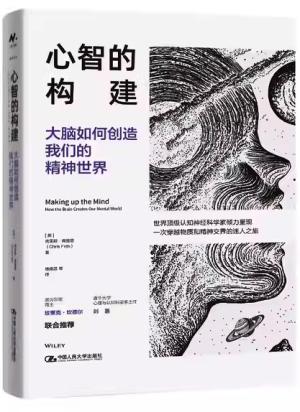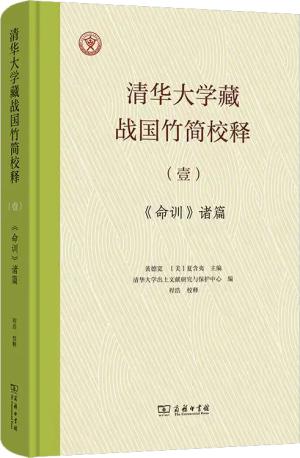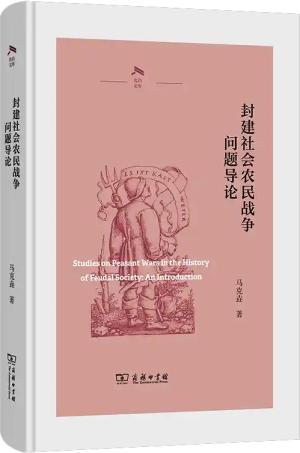新書推薦:

《
心智的构建:大脑如何创造我们的精神世界
》
售價:HK$
81.4

《
美国小史(揭秘“美国何以成为美国”,理解美国的经典入门读物)
》
售價:HK$
81.4

《
中国古代北方民族史丛书——东胡史
》
售價:HK$
87.8

《
巨人传(插图珍藏本)
》
售價:HK$
705.6

《
地下(村上春树沙林毒气事件的长篇纪实)
》
售價:HK$
76.7

《
偿还:债务与财富的阴暗面
》
售價:HK$
80.2

《
清华大学藏战国竹简校释(壹):《命训》诸篇
》
售價:HK$
94.4

《
封建社会农民战争问题导论(光启文库)
》
售價:HK$
68.4
|
| 內容簡介: |
|
《全国高职高专规划教材:仪器分析汉英对照》共有7章,内容包含:电位分析法、紫外可见分光光度法、原子吸收分光光度法、气相色谱分析法、高效液相色谱分析法、红外光谱法、质谱法。在编写过程中充分汲取了国外同类教材的最新内容,并结合国内现行教材的编写特点,采用中文导读 难点译注的方式,中文与英文在内容表述上相辅相成,方便读者全面地了解和掌握常见的仪器分析技术。在每章内容结束后还附有思考练习题,部分章节还给出了建议开设的实验,以帮助学生和教师对相关学习内容进行检查与巩固。
|
| 目錄:
|
中文导读:1电位分析法
1.1原理简介
1.2能斯特方程的应用
1.3离子选择电极
1.4直接电位法
1.5电位滴定法
1.6电位滴定法的实验数据处理
1.7电位测定相对误差评价
Chapter 1 Potentiometry
1.1 Introduction
1.2 Indicator Electrodes
1.3 Ion Selective Electrode (pH electrode)
1.3.1 Metallic Electrodes
1.3.2 Membrane Electrodes
1.3.3 Glass Membrane Electrodes
1.3.4 Crystalline SolidState Electrodes
1.3.5 Liquid Membrane ISES
1.4 Analytical Applications of Potentiometry
1.4.1 Direct Measurement of an Ion Concentration
1.4.2 Potentiometric Titrations
1.4.3 pH Measurements
1.4.4 Errors in pH Measurement with Glass Electrodes
1.4.5 pH Titrations
1.4.6 Titrations of Weak Acids and Bases
1.5 Suggested Experiments
1.6 Problems
中文导读:2紫外可见分光光度法
2.1相关知识
2.2原理简介
2.3分光光度计
Chapter 2 Ultraviolet and visible absorption spectroscopy
2.1 Introduction
2.2 Electromagnetic Radiation
2.2.1 What is Electromagnetic Radiation
2.2.2 UVvis Spectmm
2.3 Molecules and Molecular Spectroscopy
2.3.1 Rotational Transitions in Molecules
2.3.2 Vibrational Transitions in Molecules
2.3.3 Electronic Transitions in Molecules
2.4 LambertBeer''s law
2.4.1 Absorbance and Transmittance
2.4.2 LambertBeer''s law
2.4.3 Deviations from Beer''s Law
2.5 Instrumentation in the UV/Visible
2.5.1 Radiation Source
2.5.2 Wavelength Selection Device
2.5.3 Sample Holder
2.5.4 Detector
2.5.5 SingleBeam and DoubleBeam Instruments
2.6 Quantitative analysis by absorption measurements
2.6.1 Procedural Details
2.6.2 Methods in Quantitative Analysis
2.6.3 Analysis of Mixtures of Absorbing Substances
2.7 Accuracyprecision in UV/VIS absorption spectrometry
2.8 Suggested Experiments
2.9 Problems
中文导读:3原子吸收分光光度法
3.1基本原理
3.2原子吸收分光光度仪主要部件功能简介
Chapter 3 Atomic Absorption Spectroscopy
3.1 Introduction
3.2 Absorption of Radiant Energy by Atoms
3.2.1 Boltzmann Distribution
3.2.2 Measurements by Atomic Absorption
3.3 Instrumentation
3.3.1 Radiation Sollrces
3.3.2 Atomizers
3.3.3 Monochromator
3.3.4 Detectors
3.4 Correction of interfering absorptions
3.5 Analytical applications of AAS
3.5.1 Qualitative Analysis
3.5.2 Quantitative Analysis
3.6 Suggested Experiments
3.7 Problems
中文导读:4气相色谱分析法
4.1色谱法简介
4.2基本原理
4.3色谱法的分类
4.4气相色谱仪及色谱流出曲线图
4.5组分与固定相的作用
4.6程序升温技术
4.7色谱分离基础理论
4.8衡量总体分离效果的指标分离度R
Chapter 4 Gas chromatography
4.1 Introduction
4.2 Background in formation of chromatography
4.3 General concepts of analytical chromatography
4.4 The chromatogram
4.5 Retention parameters
4.5.1 Retention times
4.5.2 Retention volume (or elution volume) VR
4.5.3 Holdup volume (or dead volume) VM
4.5.4 Retention (or capacity) factor k
4.6 Separation factor between two solutes
4.7 Resolution factor between two peaks
4.8 Techniques by physical state of mobile phase
4.8.1 Gas chromatography(GC)
4.8.2 Liquid chromatography (LC)
4.9 Essential theories of chromatography
4.9.1 The plate theory
4.9.2 The rate theory of chromatography
4.9.3 Golay''s equation
4.10 Optimization of a chromatographic analysis
4.11 Gas chromatography
4.11.1 Components of a GC installation
4.11.2 Mobile Phase
4.11.3 Chromatographic Columns
4.11.4 Stationary Phases
4.11.5 Sample Introduction
4.11.6 Temperature Control
4.11.7 Detectors for Gas Chromatography
4.12 Quantitative Analysis
4.12.1 Analyses Based on Peak Height
4.12.2 Analyses Based on Peak Areas
4.12.3 Calibration and Standards
4.12.4 The InternalStandard Method
4.12.5 The AreaNormalization Method
4.12.6 Quantitative Applications of GC
4.13 Qualitative Analysis
4.13.1 The Retention Index
4.13.2 Evaluation
4.13.3 GC Coupled with Spectroscopic Detection
4.14 Problems
中文导读:5高效液相色谱分析法
5.1 高效液相色谱简介
5.2高效液相色谱法与气相色谱法的比较
5.3高效液相色谱主要类型
5.4高效液相色谱仪
5.5梯度洗脱技术
Chapter 5 Highperformance liquid chromatography
5.1 Introduction
5.2 The beginnings of HPLC
5.3 General concept of an HPLC system
5.4 Pumps and gradient elution
5.4.1 Pumps
5.4.2 Low and high pressure gradients
5.7 Stationary Phases
5.9 Detectors for HPLC
5.10 Quantitative Applications
5.12 Evolution and applications of HPLC
5.13 Problems
中文导读:6红外光谱法
Chapter 6 Infrared Spectroscopy
中文导读:7质谱法
Chapter 7 Mass Spectrometry
|
|









